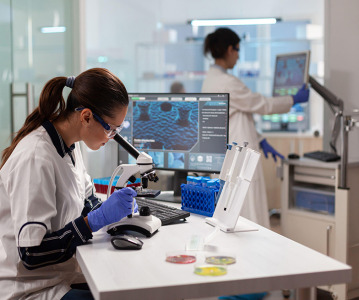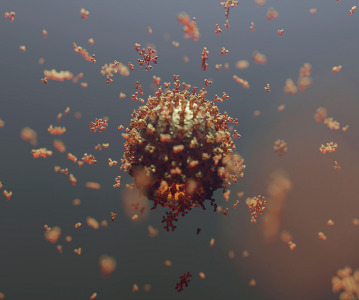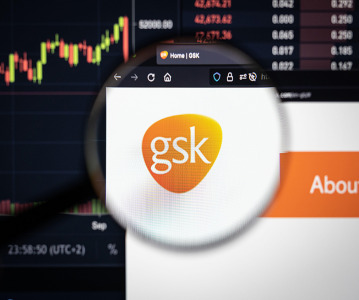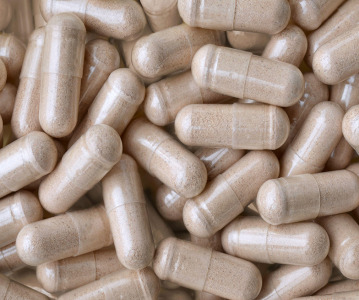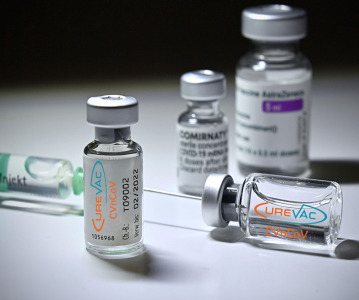COVID-19, cancer and competition: Key demand dynamics for the API sector

How are changes in new treatments and disease areas – as well as the current pandemic crisis - affecting demand for APIs?
The active pharmaceutical ingredient (API) industry is shaped and reshaped by the ebbs and flows of pharmaceutical industry demand. In 2020, the infectious diseases COVID-19 and SARS-CoV-2, the virus that causes it, were a major focus for drug firms and – as a consequence – the chemical producers and CDMOs that supply them with ingredients.
But the pandemic was not the only driver.
Drug industry interest in rare diseases along with continued growth of the market for cancer medicines also impacted the API space. Similarly, growth of the biologic market – combined with fierce competition in the generics sector– were also important dynamics.
Coronavirus
The COVID-19 pandemic has disrupted pharmaceutical industry R&D with drug firms scrambling to develop vaccines and therapeutics to try and combat the pandemic (1).
The knock-on effect on the API sector was significant. After the initial rush to move candidates into clinical trials, industry focus shifted to securing manufacturing capacity with developers agreeing multiple deals with CDMOs.
Moderna, for example, contracted Swiss CDMO Lonza to make the API for its vaccine mRNA-1273 in May (2). The contractor set up production lines for the ingredient at facilities in Portsmouth, New Hampshire in the US and Visp, Switzerland according to Reuters(3).
The Moderna deal is one of several COVID-19 projects Lonza has taken on, according to spokeswoman Martina Ribar Hestericová.
“We have received over 200 COVID-19-related inquiries and we are working with several institutions and companies on therapeutics and vaccines at various stages of development,” Hestericová said.
Others include the production of drug substance for AZD7442, AstraZeneca’s antibody candidate (4); the manufacture of Capricor’s CAP-1002 (5) cell therapy for COVID-19 related Duchenne Muscular Dystrophy (DMD) complications; and Altimmune’s (6) candidate intranasal vaccine AdCOVID.
And Lonza is not the only contractor making APIs as a result of the pandemic.
AstraZeneca and Oxford University hired Novasep to make the active substance for AZD1222 – another COVID-19 vaccine – for the European market in June (7). It signed a similar deal with Emergent Biosolutions for the US market a month later (8).
Also in July (9), J&J’s unit Janssen Pharmaceuticals hired Emergent Biosolutions (10) to make the active substance for Ad26.COV2-S, its candidate SARS-CoV-2 vaccine.
Wider impact
Another impact of the pandemic has been to increase the need for APIs for related products. According to analysis (11) by Clarivate demand for antibiotics, respiratory drugs and antivirals has increased markedly which, in turn, has brought weaknesses in the global supply chain into focus.
“The supply chain shortages have highlighted the dependencies on sourcing of raw materials and APIs from only a few countries (e.g., India, Mainland China). As a result, we are likely to see major changes in the generics industry, including de-risking of the supply chain globally.”
The authors predict drug companies will shift to more regionally diverse supply chains. They also expect API manufacturers will both increase capacity and diversify their site locations to minimize the impact on income streams.
Trends seen in the azithromycin market support this idea. According to research (12) by procurement consultant Beroe, concerns disruption caused by the pandemic would result in an azithromycin shortage prompted Indian and Chinese manufacturers to increase output.
Positive indications
COVID-19 aside, the number of new APIs in development continues to increase.
In a recent survey, IQVIA (13) predicted that an average of 54 new active substances (NAS) - defined as medicines containing at least one active ingredient that has not been marketed - would be launched over the next five years, up from 46 in the past five years.
“Globally over the past five years there has been a significant increase in the number of and spending on new active substances, particularly in the developed markets where they have historically launched first,” the analysts wrote.
Orphan diseases
Trends in the API sector also reflect the pharmaceutical industry’s focus on medicines for smaller patient populations. The rare disease sector has grown significantly in recent decades, partly as a result of government incentives to develop such products and partly because of industry’s need to find less competitive markets (14).
This trend is likely to continue and – according to IQVIA – be a major focus of activity in the API manufacturing sector.
“Orphan drugs could represent 45% of new active substances should the level of FDA orphan designations for in-progress research and breakthrough designations produce successful launches at current, historic rates,” the analysts say.
According to Frank Anderl, Lonza's head of market and competitive intelligence, “We see growth in both small molecules and biologics across all indications. Due to less predictable markets, we also expect that higher flexibility in volume demand will be required. This trend is supported, for example, through events like the rise in orphan indications in the last years."
Oncology dominates
On an indication-by-indication basis, oncology remains the major focus for the pharmaceutical industry.
According to Evaluate Pharma (15) – COVID-19 excluded – “oncology is the area with the largest proportion of clinical development spending with 40% of total pipeline expenditure.”
Similarly, analysis by the Cancer Research Institute (16) suggests, despite COVID-19, there has been a resurgence of interest in immuno-oncology (I-O) development. The authors say there was a “22 percent increase of I-O drugs in the development pipeline from 2019 to 2020, a greater year-over-year increase than seen from 2018 to 2019.”
Pharma’s focus on cancer is reflected by the API sector. In a recent report, analysts at Imarc (17) wrote that the growing incidence of cancer coupled with the rising number of R&D activities pertaining to anti-cancer drugs are driving the market for oncology APIs.
Lonza’s API production work in 2020 and its order book for 2021 tell a similar story.
“The area of API development and manufacturing was driven by autoimmune indications and diabetes, but the strongest growth was indeed observed in oncology,” says Ribar Hestericová.
Frank Anderl at Lonza is of the opinion that both drug types [autoimmune and diabetes] are clearly represented in the pharma and biotech companies' pipelines, and several are approved for diabetes and immunoinflammatory diseases.
“However, biologics show a higher market share in USD for these two indication areas already today, and this is also expected to be the case in the future," he adds.
Small molecule
Demand from the generic drug industry remained the major driver for the small molecule API sector in 2020. Key dynamics included increased regulatory pressure to assure product quality. In addition, greater competition in the space promoted developers to try to differentiate their products.
The impact on the API sector was significant, according to Molly Bowman, head of Clarivate’s generics and investigational drugs team. She says there is continued demand for quality and reliability of supply.
“New specialized products will favour those with facilities capable of handling them, driving companies to invest in upgrading and expanding or new facilities,” she adds.
Further support for this idea can be seen in API suppliers’ marketing strategies (18) which increasingly emphasise their ability to manufacture and handle such APIs.
Biologics
API supply in the biopharmaceutical space differs markedly from the small molecule sector.
According to Results Healthcare, (19) production of small molecule APIs is far more likely to be outsourced than production of biologic ingredients because “they are easier to manufacture, and tech transfer is more straightforward. There is, therefore, more trust that a CDMO will be capable of manufacturing it efficiently and in the required quality and timescale.”
The authors say the reluctance to outsource is linked to IP attached to cell strains and manufacturing processes as well as concerns about quality and supply certainty for such complex, high-value APIs, where products can generate large profits.
This interpretation is shared by Pharma Source (20) which suggests the level of outsourced small molecule API production ncreased from 57% to 64% between 2006 and 2017 while the percentage of biologic API production decreased from 49% to 25% over the same period.
Despite this there are still opportunities for contractors in the biologic API space, according to Clarivate’s Molly Bowman, who says smaller developers are the market to target.
“Emerging biopharma companies (EBP) are those with less than $500 million in revenue or with less than $200 million in R&D spending. Over the past decade, the percent of R&D activity being led by EBP companies has increased from 60% in 2009 to 72% through October 2018.”
Sustainability
Concerns about the environmental impact of API production also impacted the sector in 2020.
In recent years, various groups have suggested the production of drug ingredients is having a detrimental impact on the environment. One notable example was research (21) suggesting that improperly treated wastewater from small molecule API plants making antibiotics is accelerating the spread of antimicrobial resistance.
The finding prompted various non-profits (22) to urge organisations like the European Commission to work with governments and regulators to establish evidence-based targets for maximum levels of antimicrobial API discharge associated with the manufacture of pharmaceuticals.
In response, many firms in the API space (23) have invested in dedicated water treatment capabilities and are working with technology developers to ensure wastewater discharged from facilities is safe.
Sustainability is becoming more of a focus in the biologics space. Research published in 2019 (24) suggested culture media nutrients and cleanroom requirements are driving factors in the environmental impact of biological API manufacturing.
Gareth Macdonald
References:
- https://www.thelancet.com/journals/lancet/article/PIIS0140-6736(20)30459-1/fulltext
- https://www.lonza.com/news/2020-05-01-04-50
- https://www.reuters.com/article/us-health-coronavirus-vaccine-lonza-excl-idUSKBN2392C4
- https://www.lonza.com/news/2020-10-30-06-00
- https://www.lonza.com/news/2021-01-12-14-00
- https://www.lonza.com/news/2020-11-10-06-00
- https://www.novasep.com/home/about-novasep/media-events/press-release/coronavirus-novasep-partners-with-astrazeneca-to-produce-covid-19-oxford-vaccine-for-europe.html
- https://investors.emergentbiosolutions.com/news-releases/news-release-details/emergent-biosolutions-signs-agreement-astrazeneca-expand
- https://investors.emergentbiosolutions.com/news-releases/news-release-details/emergent-biosolutions-signs-five-year-agreement-large-scale-drug
- https://www.biospace.com/article/releases/emergent-biosolutions-signs-five-year-agreement-for-large-scale-drug-substance-manufacturing-for-johnson-and-johnson-s-lead-covid-19-vaccine-candidate-/
- https://clarivate.com/cortellis/campaigns/understanding-the-api-manufacturing-and-sourcing-landscape/
- https://www.beroeinc.com/blog/covid19-drugs-api-india-china/
- https://www.iqvia.com/-/media/iqvia/pdfs/institute-reports/the-global-use-of-medicine-in-2019-and-outlook-to-2023.pdf?_=1611409239906
- https://www.the-scientist.com/features/how-orphan-drugs-became-a-highly-profitable-industry-64278
- https://info.evaluate.com/rs/607-YGS-364/images/EvaluatePharma_World_Preview_2019.pdf
- https://www.cancerresearch.org/news/2020/immunotherapy-drug-development-pipeline-growth
- https://www.imarcgroup.com/oncology-active-pharmaceutical-ingredients-market
- https://www.pwc.de/de/gesundheitswesen-und-pharma/studie-pharma-cdmo-market.pdf
- https://resultshealthcare.com/wp-content/uploads/2019/11/Outsourced-Pharmaceutical-Manufacturing-2020-White-Paper_Results-Healthcare.pdf
- http://www.pharmsource.com/wp-content/uploads/2017/03/Jim-Miller_DCAT-2017-Presentation.pdf
- https://www.thelancet.com/journals/laninf/article/PIIS1473-3099(17)30268-2/fulltext
- https://noharm-europe.org/sites/default/files/documents-files/5037/2017-10-09_HCWH_Europe_PositionPaper_AMR.pdf
- https://www.watertechonline.com/wastewater/article/14167403/treating-active-pharmaceutical-ingredients-in-manufacturing-wastewater
- https://onlinelibrary.wiley.com/doi/abs/10.1002/jctb.5975
Related News
-
News Pharma Supply Chain People Moves
The latest appointments and promotions across the pharmaceutical supply chain. -
News Biosimilars save patients $11B annually, but barriers to adoption remain in US market
Biosimilars introduce competition into the biologics market, driving down prices and increasing patient access. -
News WHO recommends use of two monoclonal antibody treatments against Ebola
The health body recommended use of treatments by Regeneron and Ridgeback Bio -
News Sharp seeks greater foothold in Chinese market through ClinsChain partnership
Sharp hopes teaming up with clinical service provider ClinsChain will open the door to the Chinese market -
News GSK spins off consumer arm Haleon in biggest European listing for a decade
Haleon becomes the world’s biggest consumer health business, but debuted with a lower-than-expected valuation -
News SIGA reports $28M worth of new orders for monkeypox antiviral
The company has seen a sharp uptick in orders for its oral treatment as monkeypox cases rise globally -
News New CPHI report looks at CDMO outsourcing and partner selection
In The Future of Outsourcing - Strategies for Partner Selection, experts from across the pharma industry look at current trends impacting the contract services landscape and gauge the merits and drawbacks of the most common outsourcing strategies ... -
News CureVac files patent infringement lawsuit against BioNTech over mRNA technology
Company is seeking ‘fair compensation’ for alleged infringement of intellectual property rights relating to the use of mRNA tech to create the Pfizer-BioNTech COVID-19 vaccine
Position your company at the heart of the global Pharma industry with a CPHI Online membership
-
Your products and solutions visible to thousands of visitors within the largest Pharma marketplace
-
Generate high-quality, engaged leads for your business, all year round
-
Promote your business as the industry’s thought-leader by hosting your reports, brochures and videos within your profile
-
Your company’s profile boosted at all participating CPHI events
-
An easy-to-use platform with a detailed dashboard showing your leads and performance

